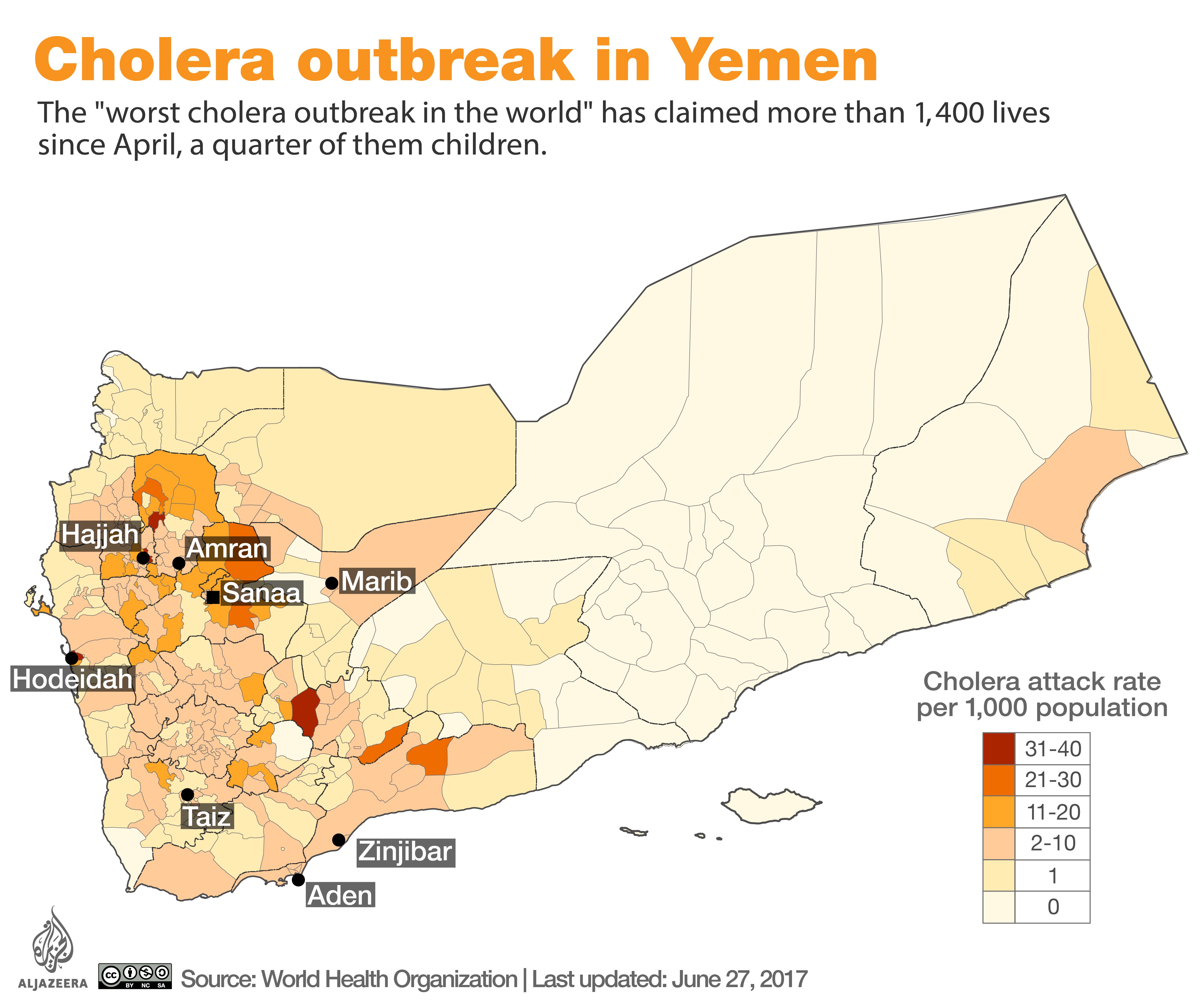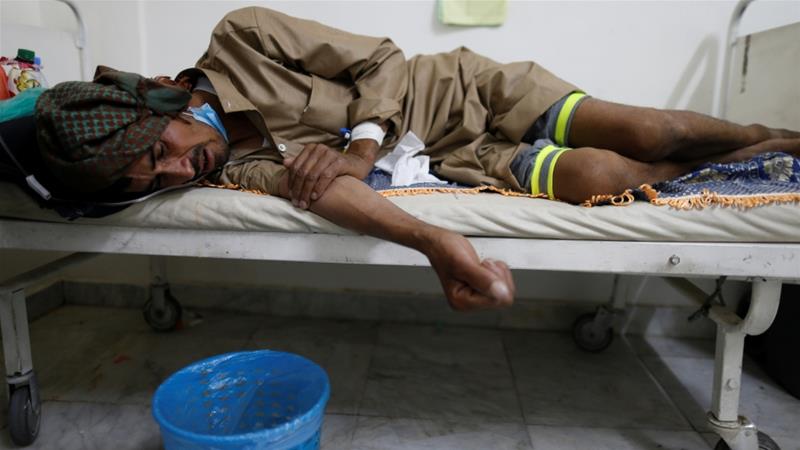Yemen's Cholera Epidemic - Revisiting Copper as a Potential Prophylactic
The humanitarian disaster in Yemen has recently taken a turn for the worse. The country had entered a civil war for since 2014, worsened by a massive air campaign by Saudi Arabia. The conflict has led to the destruction of the country’s health sector, and in the past 2 months, there has been a tenfold increase in the number of cholera cases. The World Health Organization (WHO) reports that in the past 3 months 1500 people have died and over 240,000 people have been infected. Nevio Zagaria, Yemen’s WHO representative said that the epidemic has hit 21 of Yemen’s 22 provinces. The number of cases is rising by 5000 per day.

Cholera is an intestinal infection caused by the bacteria vibrio cholerae, leading to watery diarrhea, vomiting, and dehydration hours to days after exposure. The dehydration is often extremely severe resulting in electrolyte imbalances, blueish skin, and even death. Cholera is most commonly caused by the contamination of drinking water with human feces containing the bacteria. This often occurs in war, when infrastructure is severely damaged, as currently in Yemen.
The best prevention for cholera is to improve sanitation and access to clean water. However, this is not immediately possible in a country who is having its civil infrastructure destroyed by aerial bombardment. Another method of prevention is vaccination, although it not readily available and only has an efficacy of 50%.
Prior to the discovery of antibiotics, copper was often used for antibiotic applications, and may help the humanitarian devastation in Yemen today. In the 1800s, there was a cholera outbreak in much of Sweden. However, the town of Fahlun was spared, and members of the Royal family took abode in Fahlun to escape the epidemic. The town of Fahlun was home to large copper mines, and it was theorized that the copper fumes provided protection against the cholera outbreak. Furthermore, workers of the copper mines did not get sick, even as their entire neighborhoods contracted the infection.

In the late 1800s, physicians determined that copper acts prophylactically and therapeutically on cholera and choleraic diarrhea. The following is summarized from the 1883 book The Prophylactic Power of Copper in Epidemic Cholera, by Arthur de noe Walker who writes about a practical method for preparation and administration of copper to those exposed to epidemic cholera.
The metal must be purified of all extraneous matter. Dissolve 3 parts Sulphate of Copper in 8 parts of distilled water, to which add 8 parts of honey. Mix, and boil for 30 minutes and add thereto a pint or two of water. Let the whole rest; decant the supernatant fluid, and filter the pulverulent copper. Finally, dry the pure Copper at gentle heat and put aside for use in a glass receptacle, duly corked, and label Cuprum Metallicum.
Provide now a new pestle and mortar, pour a sufficient quantity of alcohol and set fire to it, to burn to kill any microbes.
Weigh 10 grams of the Copper and 100 grams of purified Sugar of Milk – the best vehicle, because inert. Place about a third of the metal and a third of the Sugar of Milk in the mortar and diligently rub and triturate both for about five or six minutes. Gather the whole in a heap with a bone spatula and add thereto another third of the Copper and vehicle, and triturate for five to six minutes as before; finally, do the same with the last third of both metal and vehicle; empty the mortar of all the contents and put aside. This is the first Trituration.
Take now 10 grains of the first Trituration and put about a third of these 10 grains in the mortar with about a third of 100 grains of fresh Sugar of Milk, and triturate as before for about five or six minutes; gather together, and add a second third of the 10 grains of the first trituration and of Sugar of Milk; triturate as before, and finally do the same with the last third of both Copper and vehicle.
Proceed now to make a third trituration, as directed for the two first, put all in a glass vial and label Cuprum Metallicum. Third Decimal Trituration.
Add 100 drops of pure alcohol to a glass vial, to which add 10 grains of your 3 Trituration of Copper; cork with a new cork, and shake at least 100 times. This forms the first decimal Attenuation.
Empty contents of first attenuation, all but 10 drops, to which add 100 drops of fresh alcohol and shake and concuss as before. Repeat this operation six times and label the bottle Cuprum Metallicum. Sixth decimal attenuation.
Put in a two ounce bottle 10 grains of the third decimal Trituration and pour half-an-ounce of spirit with an equal quantity of distilled water, add 100 drops of your 6 dilution shake and concuss the contents as before. The prophylactic is ready for use.
If Cholera has broken out, give each adult 3 drops of the quid in half a wine-glass of water morning and evening, on an empty stomach, for a period of seven days; once a day during the second week, and every other morning, on an empty stomach, as long as the epidemic prevails.
The author also suggested to wear a thin plate of Copper, five and a half inches wide and eight and a half inches long, fastened across the abdomen, or preferably across the loins.
The use of copper in the cholera epidemic facing the Yemeni people may be beneficial and needs to revisited and examined further.

Links:
The Prophylactic Power of Copper in Cholera Epidemic (1883). Arthur De Noé Walker.
Congratulations @cryptojatt! You received a personal award!
You can view your badges on your Steem Board and compare to others on the Steem Ranking
Vote for @Steemitboard as a witness to get one more award and increased upvotes!